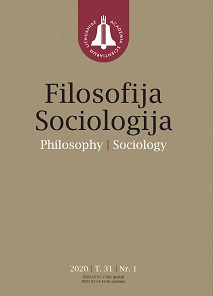Institucinės agresijos apraiškos vaiko gerovės profesionalų veikloje
Manifestations of Institutional Aggression in the Practice of Child Protection Workers
Author(s): Lijana Gvaldaitė, Egle Šumskiene, Donata Petružytė, Violeta Gevorgianienė, Laimutė Žalimienė, Miroslavas SeniutisSubject(s): Sociology, Management and complex organizations, Health and medicine and law, Human Resources in Economy
Published by: Lietuvos mokslų akademijos leidykla
Keywords: workplace quality; institutional aggression; stress; child welfare professionals;
Summary/Abstract: Studies show that practice in some professional fields may be socially and morally unattractive: employees working with stigmatized groups have to use methods, related to aggression and confrontation, which leads to stress and reduces their professional well-being. This applies to child rights and protection institutions which have a responsibility to take a child out of the family in the case of a threat to their safety. Problems related to workplace quality lead to a lack of qualified employees in this sector, and this problem is emphasized not only in Lithuania. Institutional aggression is typical of institutions to which the state attributes certain functions of abuse (e.g. public safety). Employee’s intervention into the family can also be regarded as aggression performed by institutions, and the nature of work in these institutions may be associated with the problem of workplace aggression. However, in the research on workplace quality among the indicators of workplace aggression we do not find the indicator of employees’ aggression against clients. We presume that an employee’s function to take a child from a family (the use of coercion) can affect their well-being. So, in the context of workplace quality, the concept of workplace aggression has to be re-conceptualized by including institutional aggression enforced by an employee.
Journal: Filosofija. Sociologija
- Issue Year: 31/2020
- Issue No: 2
- Page Range: 148-156
- Page Count: 9
- Language: Lithuanian

